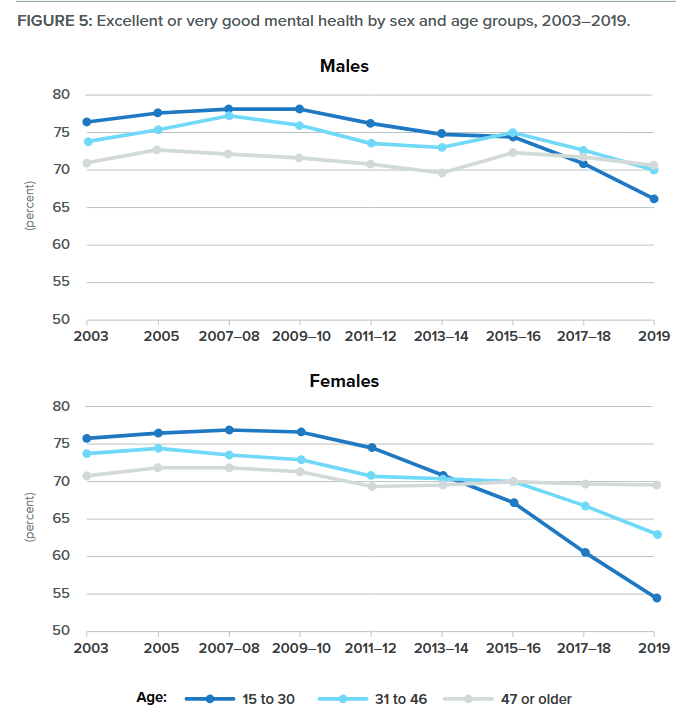
(Anilasnora, 2021)
What is the Issue?
Within recent years, Canada has seen significant drops within youth mental health across the nation. A study published by the MacDonald-Laurier Institute explores this crisis and its roots. Through further research it was revealed 47% of students aged 12 – 18 experienced acute psychological distress in 2021. Studies suggest the transition to online schooling during the COVID-19 pandemic significantly affected the anxiety and depression rates amongst youth.
In a Western University study, researcher Emma Duerden Explored the connection between phones and mental health. She found children to be exceedingly anxious over participating in social interactions and connections. Due to the excessive time spent on screens, teens are prone to experiencing depression, anxiety, aggression, and impulsive behaviour as a result.
A survey was conducted in 2019 to record the claims of excellent mental health exhibited by the youth between 2003-2019. The report shows there was a 29% decrease in positive mental health. One can assume the accelerated drop in youth with strong mental resilience is due to the popularization of phones and social media. The internet has taken this generation to the next level and developed a dependency on personal devices. Though these numbers are troubling, numbers continued to plummet following the COVID-19 restrictions in early 2020.

(Statistics Canada, 2021)
Phone Usage and Education
One of the biggest impacts phone usage has had on youth is the lack of resilience within education. Reading proficiency has been declining at an alarming rate as the attention span and motivation is void of the students. The overstimulation that is found when engaging with devices for most hours of the day dysregulates one’s focus and capability to see tasks through. This is extremely evident with applications such as TikTok, which is formulated to show rapid fire videos and cover a plethora of topics in one session. The cycle of watching short 15-second clips for hours on end gives the viewer a dopamine rush that can easily become addictive. In turn, their concentration within their classes is compromised as they are trained to have a shortened attention span. They find difficulty in following a slower-paced itinerary that is taught through a single educator.
The struggle with concentration is a direct result of the overreliance on devices. Educators find themselves at a loss as they cannot provide more challenging material to their students. The ability to complete meticulous tasks are reduced and students are regressing in progress compared to the population of youth before. Within each grade level, there is a certain expectation to be met in terms of educational standards. Teachers and parents are finding a significant gap in where children need to be versus where they currently are.

(3LI, 2012)
Next Steps?
Researchers suggest that the growing epidemic of youth mental health and device usage goes beyond an educational system problem. To properly address these issues, it must be looked at from a public policy approach. The restriction of cellphones in classrooms only proves as a temporary fix and the real long-term effects are what must be resolved as soon as possible. It is important that parents, guardians, and care-takers are aware of the lasting damage these devices have on youth. Their future is reliant on finding a solution to this crisis.

